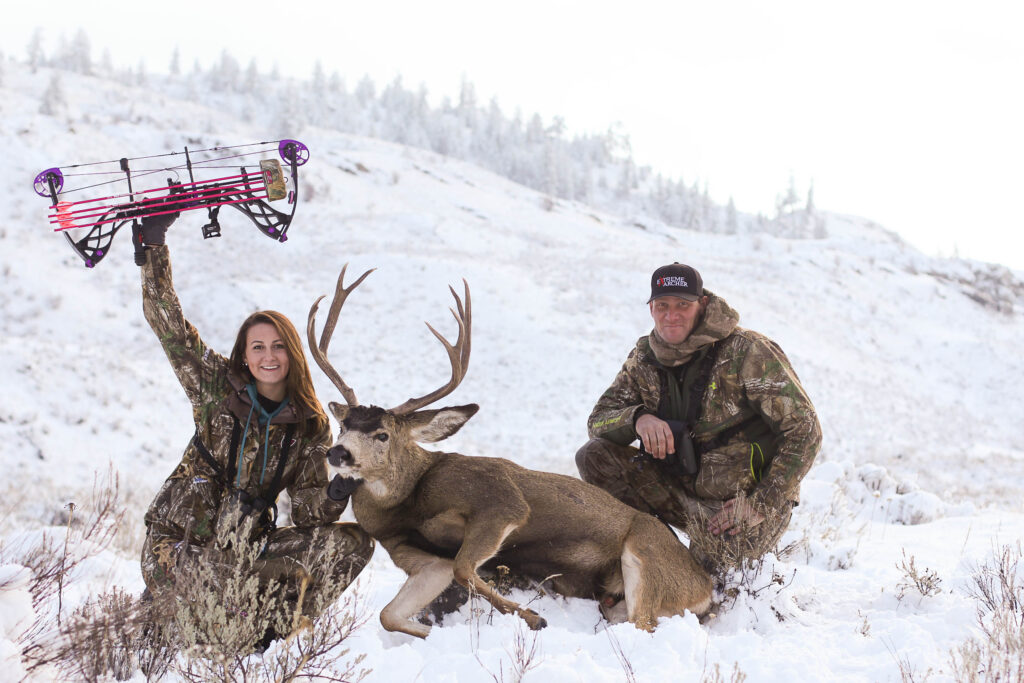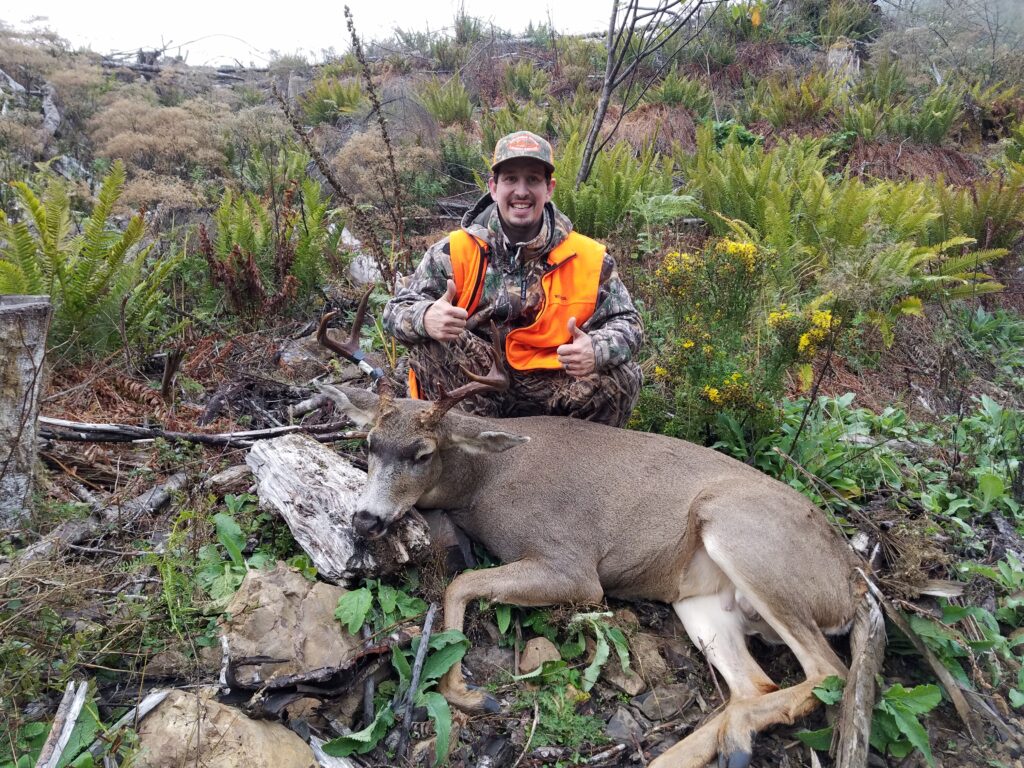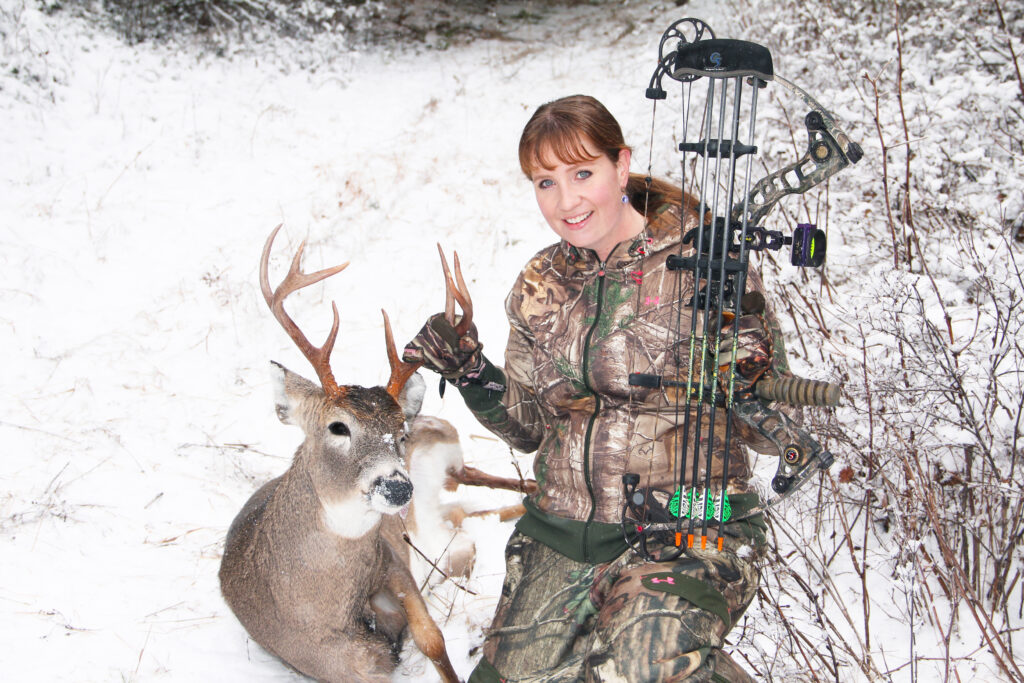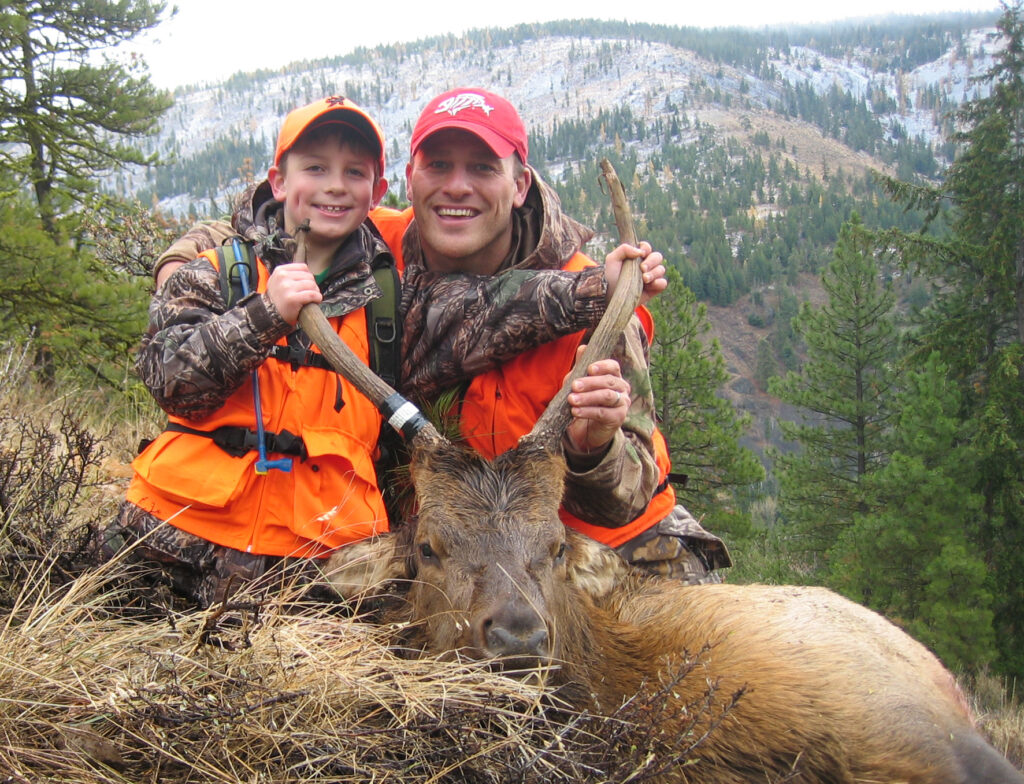
Monthly big game breakdown series
By Tom Ryle/WDFW
For this final installment of this year’s monthly Big Game Breakdown, we focus on our December late hunts. Late season hunting can be both challenging, frustrating, and rewarding. Cold temperatures, dicey winter road conditions, and effectively short hunting days are a few notable things to contend with. On the flipside, there is nothing more satisfying than overcoming those things to tag that buck or bull toward the tail end of the entire fall hunting season!
As the fall season progresses, big game animals turn from reproduction to survival. They are focused on food, security cover, and conserving energy. So, keep these things in mind as you head afield this month.
December
Whitetails, blacktails, and mule deer will all still have breeding on the brain this month, mostly around mid-December when the secondary rut can create a flurry of short-lived rutting action.
Mule deer
As snow continues to accumulate in the high country, many deer will be concentrated at the snow line elevation. Glassing for deer remains an excellent tactic to locate deer early and late in the day and focus more on south-facing slopes that receive the warmth of the sun.
As I mentioned last month, one of the most exciting ways to pursue mule deer is by cutting a large, fresh track in the snow and following it out to find the buck. Try to determine where the buck might be headed and continually use binoculars to scan ahead.
Does are always a magnet for December bucks looking to breed one last time. If you find does feeding, spend plenty of time picking apart the area around them for an approaching buck.

Black-tailed deer
December blacktails can be very difficult to hunt due to several factors. Short days, wet weather, and solitary nocturnal behavior are three biggies. Still, it can be done. I’ve found that blacktails experience a somewhat predictable secondary rut around the 15th of the month, which can last right up to the bell on Dec. 31. In fact, I once saw two bucks in an all-out brawl in the snow while I was working on a buck I’d shot an hour or so earlier. They were clearly fighting over an estrous doe in the area.
For this reason, I’ve taken to using doe and fawn bleat calls and even rattling antlers again during the last couple weeks of the season. Remember that late deer season in some GMUs ends on Dec. 15, so be sure to double check the season dates for the areas you plan to hunt.
As mentioned last month, still-hunting big timber stands during cold, rainy days is a go-to tactic for many successful blacktail hunters. Another go-to tactic is to put up a treestand within range of freshly used trail intersections.

White-tailed deer
I covered some general information about whitetail habitat in last month’s post, so consider this when deciding where to hunt, along with the applicable season dates.
With the likelihood of snow on the ground in December across much of the whitetail’s range, you now have the advantage of seeing where deer have been. If you’re hunting a new area for the first time, this is a great time to do some in-season scouting to locate concentrations of deer, bedding areas, feed areas, and all the connecting trail systems that can put you in the right place at the right time.
December whitetail hunting is primarily a game of patience, focusing on food sources and routes leading to/from them. This can be done a number of ways ranging from portable ground blinds, treestands, or natural blinds constructed from downed limbs and debris. Spot-and-stalk hunting can work well with a dumping of fresh snow but becomes very difficult after a night or two of freezing weather. Crunchy snow will let every deer in the area know where you are, which is why stationary stand hunts are a great option. Prepare for cold weather and always keep the wind in your favor.

Elk
Late-season elk tactics center on several considerations. First, with the breeding season in the past, bulls have shifted focus to recuperation and preparation for winter, which means rest and food. Depending on the elevation and habitat, that could look quite different. In more extreme winter conditions of Northeast Washington and mountainous areas, focus on south facing slopes that receive the warmth of the sun, which keeps food sources more accessible longer into winter. In more temperate conditions without lasting snow accumulation, such as most of Western Washington, food isn’t as difficult to come by through the winter months.
Herd dynamics change around mid-October and continue into November. By December, many older bulls will rejoin bachelor groups while the younger bulls tend to stay with the larger herds. In general, bulls will remain in higher elevations longer while the larger bands and herds move into lower wintering grounds ahead of any significant snow accumulation in the high country. Lowland Western Washington elk tend to hang in the same areas year-round but will always prioritize optimal food sources and shift accordingly.
With all that said, it can pay off to focus on quality food sources, such as clearcuts, field edges, river or creek bottoms that offer larger openings that encourage grasses, elderberry, and other foods sources to flourish.
Elk will rest more during December late seasons, which means they will focus on bedding areas that provide the good thermal cover of a thick canopy. A stand of mature timber adjacent to a 3 to 5-year-old clear cut (prime for feed), could be a good bet. Remember that elk will bed down facing all directions to monitor for predators, so plan your approach accordingly and always monitor the wind.
There are some great opportunities to fill your tag in December with some seasons running through the 15th. Remember that there are a few GMUs that overlap archery and muzzleloader seasons so be sure to double check the season dates and regulations before heading afield.
Good luck!




